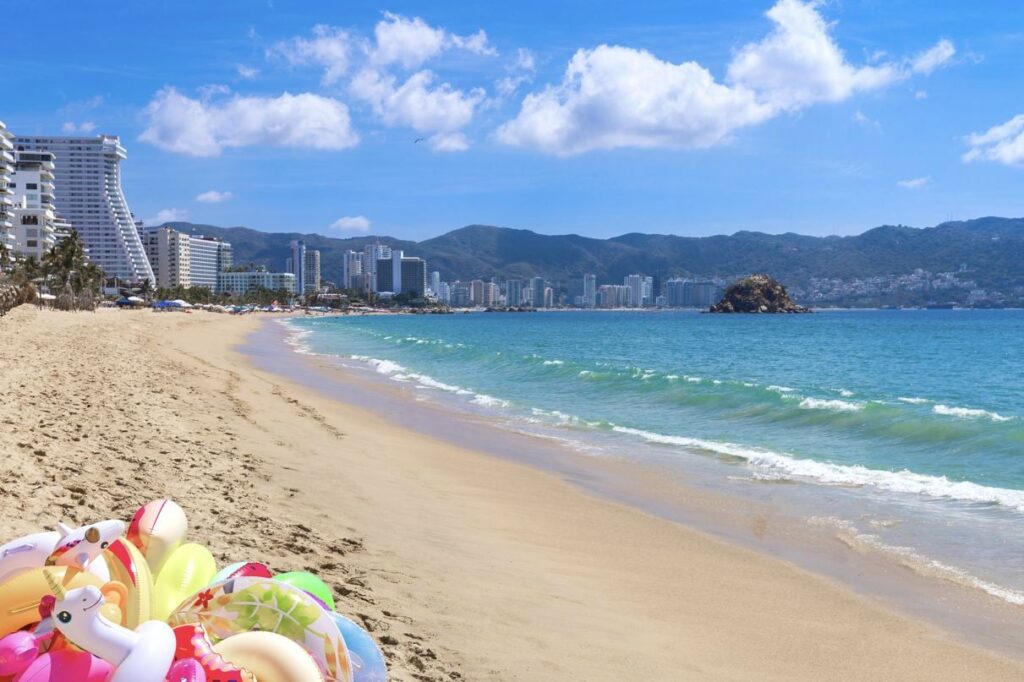Travel Guide
US State Department Says Do Not Travel To These 4 Mexico Beach Destinations In 2025
Dreaming of a sunny Mexican beach escape? You’re in good company – Millions of American travelers head south each year to soak up everything from lively coastal cities to peaceful seaside towns. However, staying informed about potential travel risks is an essential part of planning any international trip.
The U.S. government has different warning levels for travel in Mexico, from Level 1 “Exercise Normal Precautions” (just be careful like you normally would) to Level 4 “Do Not Travel” (they’re saying it’s too dangerous to go). While many popular areas across Mexico have lower advisory levels, it’s important for travelers to be aware that some well-known beach destinations are located within Mexico states that the U.S. State Department currently advises against traveling to at the highest level for 2025.


Understanding the Weight of a Level 4 Advisory
It is crucial for anyone considering travel to understand the significance of a Level 4 advisory. This is the highest warning level issued by the U.S. government and indicates a determination of a very high risk to travelers, including the potential for life-threatening situations. The reasons, such as the crime and kidnapping concerns for these specific states, are based on thorough assessments of the security conditions by the State Department. Furthermore, a Level 4 advisory often means that the U.S. government may have limited capacity to provide emergency services and direct assistance to U.S. citizens in these areas if a problem arises. It represents a formal recommendation to avoid travel due to these serious potential dangers.


Navigating Advisories and Travel Realities
It’s understandable that there can sometimes be a disconnect between an official “Do Not Travel” advisory for an entire state and the experiences of many travelers who visit popular tourist areas within those states without incident.
Yes, lots of Americans have great, safe trips to Mexico, even to states that have higher travel warnings. And it’s true that touristy areas often have more security. However, the U.S. government’s advisory isn’t just looking at those specific tourist spots. It’s taking a broader look at the entire state and saying that there are risks that could be present even outside of those well-protected resort areas. Because of this overall security situation, there’s a higher chance of encountering danger, and it might be hard to predict where or when something could happen.


Think of it like this: Imagine a city where one neighborhood is very safe and well-patrolled. Lots of people live there without any problems. But the government might still issue a warning for the entire city if other neighborhoods have higher crime rates and things can be unpredictable. Even though your specific neighborhood feels safe, the overall risk for the whole city is higher.
Mexico Beach Destinations Under a Level 4 “Do Not Travel Advisory
Manzanillo – Colima


Down on Mexico’s Pacific coast is Manzanillo, a significant port city situated in the state of Colima. It’s a popular spot known for its picturesque bays and its worldwide recognition as the “Sailfish Capital.” Travelers are drawn to its beaches and reputation for excellent sport fishing. However, for 2025, the U.S. Department of State has issued a Level 4: Do Not Travel advisory for the entire state of Colima. The primary concerns cited for this high-level warning are crime and kidnapping within the state’s borders.
Acapulco – Guerrero


Acapulco holds a special place in the history of Mexican tourism, often considered the country’s first major international beach destination that gained fame attracting Hollywood stars decades ago. It remains an energetic city known for its dramatic cliff diving performances, stunning crescent-shaped bay, and lively atmosphere. Acapulco’s ongoing appeal is even being highlighted in a recent bilingual comedy series on Apple TV+ titled “Acapulco.” This iconic city is located in the state of Guerrero. For 2025, the U.S. Department of State currently advises Level 4: Do Not Travel for all of Guerrero, citing widespread crime as the main reason for this serious advisory throughout the state.
Ixtapa-Zihuatanejo – Guerrero


Located just up the coast from Acapulco is the popular area known as Ixtapa-Zihuatanejo. This destination offers a notable contrast, combining the modern, planned tourist infrastructure of Ixtapa with the authentic, laid-back charm of the traditional fishing village of Zihuatanejo. Both areas share beautiful stretches of Pacific coastline and attract visitors seeking different kinds of beach experiences. However, this region is also part of the state of Guerrero. As with Acapulco, the U.S. Department of State’s advisory for Guerrero remains at Level 4: Do Not Travel for 2025, primarily due to significant crime concerns across the state.
Mazatlán – Sinaloa


Further north on the Pacific coast lies Mazatlán, often referred to as the “Pearl of the Pacific.” This vibrant coastal city offers a blend of attractions, from its charming historic district and extensive malecon (boardwalk) to its appealing beaches. Mazatlán is also home to one of the world’s largest and most famous carnival celebrations, often ranked as the third-largest globally, drawing hundreds of thousands of attendees for its lively parades and events. Mazatlán is situated in the state of Sinaloa. For 2025, the U.S. Department of State has issued a Level 4: Do Not Travel advisory for the entire state of Sinaloa, with crime concerns cited as the reason for this high-level travel warning.
Planning for Safety: Important Tips
If, after carefully reviewing the U.S. State Department’s advisory and understanding the associated risks, you still decide to travel to a Mexican region with an elevated advisory level, prioritizing your personal safety is absolutely vital. The U.S. State Department provides several general safety tips that are always recommended for travel in Mexico, and they become especially important in areas with higher advisories:


- Maintain Situational Awareness: Always be acutely aware of your surroundings and any potential safety concerns.
- Practice Discretion: Avoid openly displaying valuable items like expensive jewelry, electronics, or significant amounts of cash that could attract unwanted attention.
- Use Secure Transportation: Be cautious when choosing transportation. Rely on trusted options such as official hotel taxis, authorized taxi stands (“sitios”), or reputable app-based ride services. Avoid hailing random taxis from the street.
- Limit Night Driving: Avoid driving between cities, particularly after dark, especially in states with higher advisory levels.
- Keep Others Informed: Share your travel itinerary and your whereabouts with family or friends back home, and check in with them regularly.
- Enroll in STEP: Register your trip with the Smart Traveler Enrollment Program (STEP) before you depart. This free service helps the U.S. Embassy contact you in an emergency and provides important security information updates for your destination.
So, the bottom line is, always check the very latest travel warnings from the U.S. government’s official website when you’re thinking about your trip, and then check again right before you actually go. Things can change pretty quickly. Making smart choices based on the newest info and always putting your safety first is just the right way to travel internationally. Safe travels!
Ready For Your Trip? Check The Latest Entry Requirements For Your Destination Here
↓ Elevate Your Travel↓
Sign Up Now For Travel Off Path Premium! No ads, VIP Content, Personal Travel Concierge, Huge Savings, Daily Deals, Members Forum & More!


✈️Join Our Travel Off Path Community Forum: Where travelers unite, ask questions, share experiences and even find like-minded travel buddies!
SUBSCRIBE TO OUR LATEST POSTS
Enter your email address to subscribe to Travel Off Path’s latest breaking travel news, straight to your inbox.
This article originally appeared on TravelOffPath.com
Opinions expressed here are the author’s alone, not those of any bank, credit card issuer, hotel, airline, or other entity. This content has not been reviewed, approved or otherwise endorsed by any of the entities included within the post.

